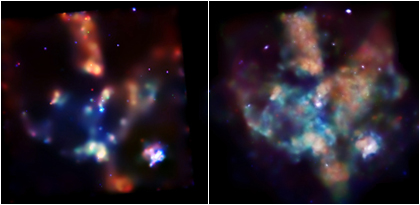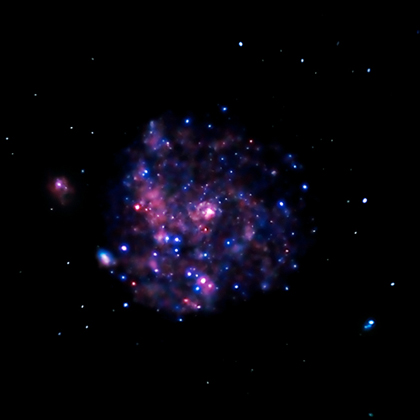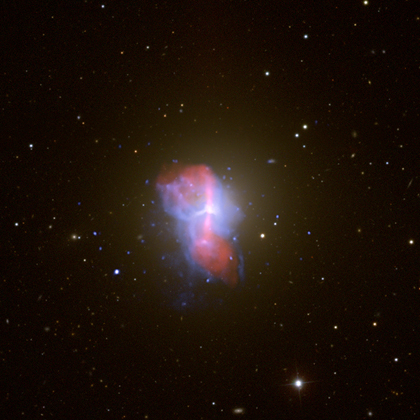Ushering in IYA2009, Chandra-Style
There are some exciting, yet different, Chandra-related events happening at the American Astronomical Society (https://aas.org/) meeting in Long Beach, CA today. First, there was a press conference this morning to announce new results on Cassiopeia A that bring this supernova remnant "to life". One result shows how Cas A has changed from 2000 - just after Chandra's launch - through until late 2007. This is the first time scientists have been able to watch as a supernova remnant changes like this over time.
Last minute E-carding
It sounds like a good portion of the United States got walloped over the weekend with snow and ice and seemingly everything in between. (Yesterday was, after all, the winter solstice and the official start of the season, so what else should we have expected?) While the white stuff can be beautiful, it can also put a damper on holiday errands. For those of us who might be lagging behind on getting their holiday cards in the mail, we here at Chandra can help you out. We've put together a bunch of e-cards that, almost magically, do not involve the Post Office in order to get delivered.
Dark Energy Trailer on YouTube
By now, you've probably seen the news stories on our exciting and important new work on dark energy. For those of you who want even more, take a look at this posting on YouTube. The main scientist behind these results, Alexey Vikhlinin of the Smithsonian Astrophysical Observatory, put together a great movie describing the new science.
Watch the video on Youtube
Doing More with More
Back in 2002, we released a colorful image of the star-forming region known as 30 Doradus (also called the Tarantula Nebula.) At the time, we thought it was a beautiful image - and it was - of this pocket of intense stellar birth and death in the neighboring Large Magellanic Cloud.
X-ray 101
There are those of us who are experts, and then those of us who are not. Even some of us who have been working in X-ray astronomy can lose track of some of the basics. To help provide a little introduction or perhaps just a refresher, we've put together a little thing we like to call "X-ray 101". It's meant just to give a very quick overview of what Chandra is and what X-ray astronomy is all about.
News flash: Sticky tape generates X-rays
Recently a group of researchers from the University of California at Los Angeles announced what has been described by the New York Times as a "tour de force of office supply physics." The scientists measured X-ray flashes from a roll of Scotch tape as it was unpeeled.
A Pinwheel in X-rays
M101: A large spiral galaxy about 25 million light years away in the constellation Ursa Majo. More at https://chandra.harvard.edu/photo/2008/m101/
FREE STUFF!
Now that we shamelessly have your attention, we'd like to invite you to take a survey about our newly redesigned website. We know, we know, surveys can be less than stimulating. To make it worth your while, we are offering the possibility of a free package of Chandra goodies – bookmarks, postcards, etc. – that will be mailed directly to you. We'll pick 50 people randomly to get the stuff, and we'll let you know if you’ve been chosen.
Huge Russian Dolls Surrounding a Galaxy
M84: A massive elliptical galaxy about 55 million light years away in the Virgo Cluster. More at https://chandra.harvard.edu/photo/2008/m84/
-Kim Arcand, CXC
Happy Anniversary, Einstein Observatory!
While we like to focus on the current excitement in X-ray astronomy, sometimes it's good to look back. Last week marked the 30th anniversary of the launch of the Einstein Observatory. Back on November 13, 1978, the High Energy Astrophysics Observatory 2 was launched on Atlas-Centaur booster rocket. Shortly afterward, the satellite was renamed in honor of that little known scientist, Albert Einstein. While HEAO-2 is catchy, we think Einstein is a little easier off the tongue.



